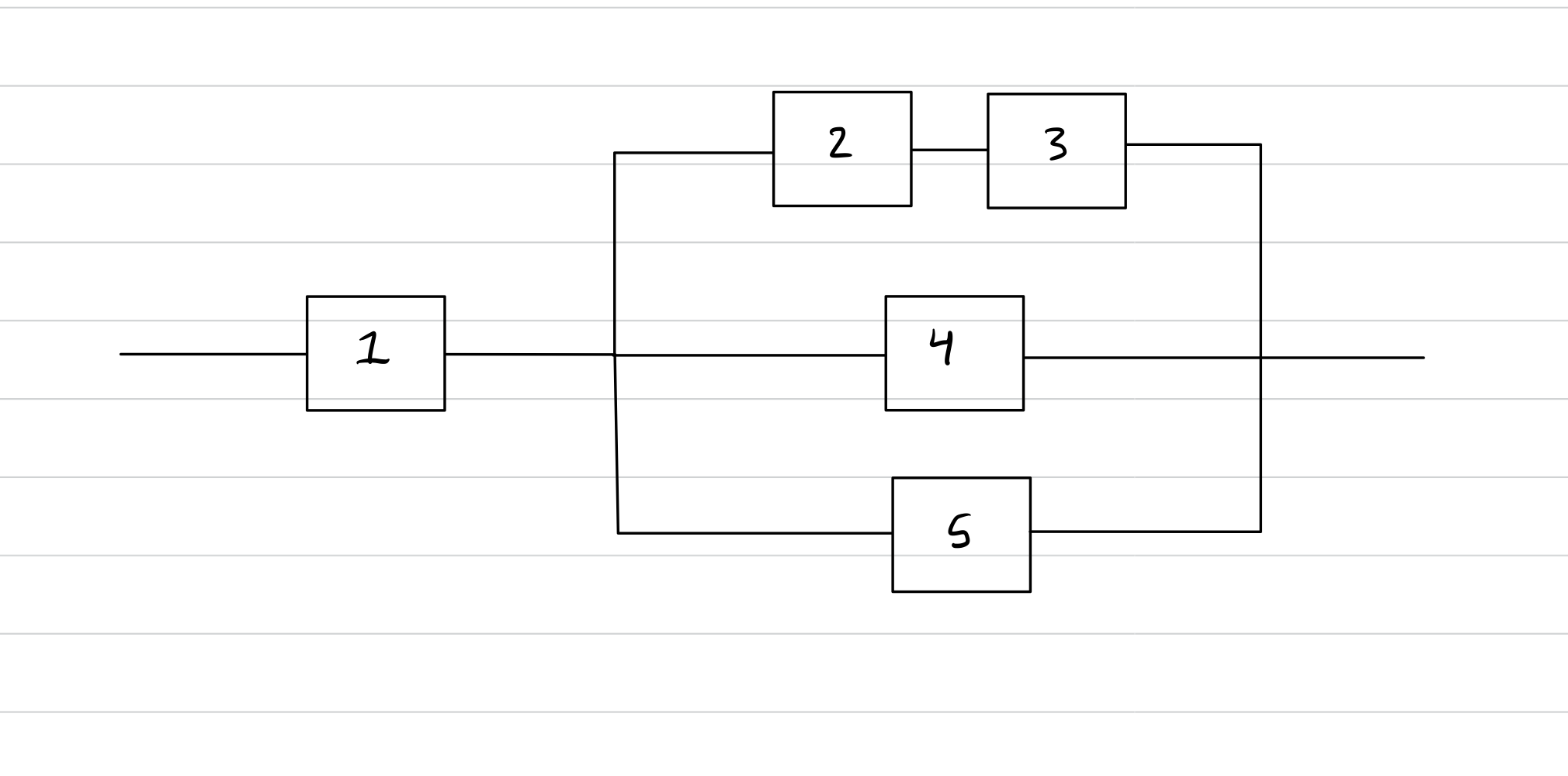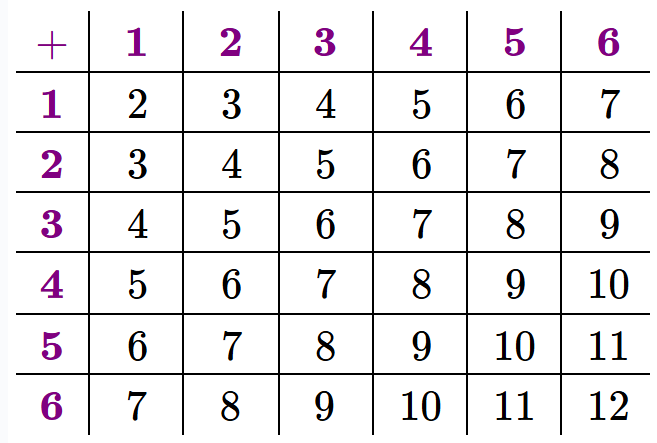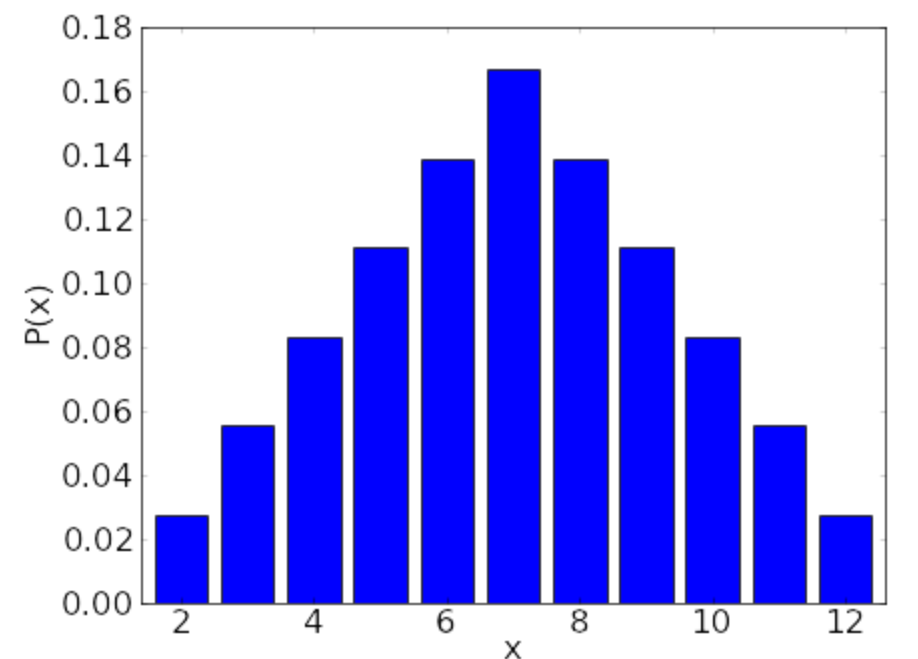Repeated trials
19 - Multinomial: Soft drinks preferred
Folks coming to a party prefer Coke (55%), Pepsi (25%), or Dew (20%). If 20 people order drinks in sequence, what is the probability that exactly 12 have Coke and 5 have Pepsi and 3 have Dew?
Solution
The multinomial coefficient
Each such assignment is one sequence of outcomes. All such sequences have probability
The answer is therefore:
Reliability
20 - Reliability: Series, parallel, series
Suppose a process has internal components arranged like this:
 Write
Write
The success probabilities for each component are given in the chart:
| 1 | 2 | 3 | 4 | 5 |
|---|---|---|---|---|
| 92% | 89% | 95% | 86% | 91% |
Find the probability that the entire system succeeds.
Solution
- && Conjoin components 2 and 3 in series.
- Compute:
- Therefore:
- Compute:
- && Conjoin components (2-3) with 4 and 5 in parallel.
- Compute for the complement (failure) first:
- Flip back to success:
- Compute for the complement (failure) first:
- & Conjoin components 1 with (2-3-4-5) in series.
- Compute:
- Compute:
Discrete random variables
21 - PDF and CDF: Roll 2 dice
Roll two dice colored red and green. Let
- Find the PMFs of
and of and of . - Find the CDF of
. - Find
.
Solution
- & Sample space.
- Denote outcomes with ordered pairs of numbers
, where is the number showing on the red die and is the number on the green one. - Require that
are integers satisfying . - Events are sets of distinct such pairs.
- Denote outcomes with ordered pairs of numbers
- && Create chart of outcomes.
- Chart:

- Chart:
- & Definitions of
, , and . - We have
and . - Therefore
.
- We have
- && Find PMF of
. - Use variable
for each possible value of , so . - Find
: - Therefore
for every .
- Use variable
- & Find PMF of
. - Same as for
:
- Same as for
- &&& Find PMF of
. - Find
: - !! Count outcomes along diagonal lines in the chart.
- Create table of
: 
- Create bar chart of
: 
- Evaluate:
.
- Find
- &&& Find CDF of
. - CDF definition:
- Apply definition: add new PMF value at each increment:
- CDF definition:
22 - PMF for total heads count; binomial expansion of 1
A fair coin is flipped
Let
The PMF of
Is this equation really true?
There is another way to view this equation: it is the binomial expansion
23 - Life insurance payouts
A life insurance company has two clients,
Define a random variable